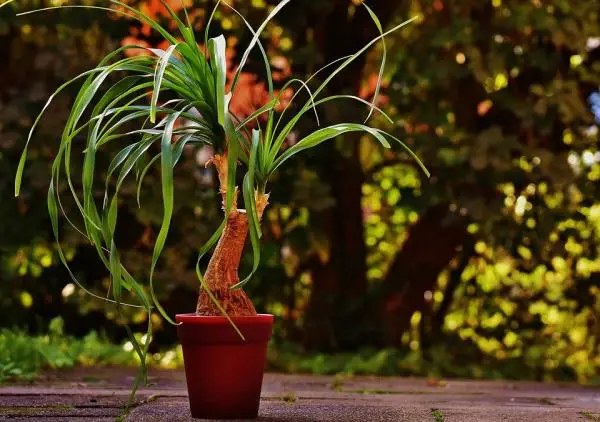The formerly known as Nolina recurvata , also called the elephant’s foot, has recently been classified in the genus Beaucarnea . They are very striking plants for their sculptural bearing, which is why they are highly valued as ornamental plants in gardening and decoration, because although it grows much better and taller outdoors it can also be kept indoors, although only if it is spacious. .
If you like to have it at home and you want to know what the care of the elephant foot or nolina plant is , join us in this article in which we offer you a practical guide with all the details about its characteristics, how to care for it and how to reproduce it.
Elephant’s foot or nolina plant: characteristics
The Beaucarnea recurvata is a succulent plant native to Mexico, where it is protected, and other Central American countries.
In the wild it can reach heights of up to 10 meters , but when planted in a pot it is rare that it exceeds one or a half meter, although with this height in an interior it is considered one of the tall indoor plants and, in fact , It is widely used as a decorative plant.
Its most characteristic feature is that it has few branches and that its trunk that widens at the base in a very striking way to give space to the water reserves of the plant, thus giving the elephant foot plant its peculiar shape and because of the given this name. Its leaves are thin and long, falling towards the ground with a certain curvature, and are of a very beautiful deep green color. The plant can produce small, light-colored flowers, although it takes many years to do so, around 10 years.
Now that you know its characteristics, we will explain how to care for an elephant foot or nolina plant . It is a very slow growing plant, but despite this it is very easy to care for, as is the case with many succulents. If you are a newbie to caring for plants, most succulents tend to be plants that have very identifiable weaknesses and that withstand distractions in their care quite well. Let’s see what are the main cares for Beaucarnea recurvata .

Light for the nolina
The natural climate of this plant is the desert , so it is not difficult to imagine that it is a species that appreciates receiving a lot of light . It can tolerate locations where it does not receive direct light, so it is used as a houseplant, but the health of your plant will be much better if you place it next to a very bright window.
Elephant foot watering
Overwatering is one of the great weaknesses of most succulents. These plants are not prepared to receive large amounts of water, so exposing them to very high humidity will cause their roots and stem to rot and the plant will become ill or die. To make sure you don’t overwater it , check for good drainage and wait until the top layer of its substrate has dried before watering it again.
Temperature
The other major danger for the elephant foot is the cold, which is another reason why the plant is usually grown indoors. Due to its desert nature, Beaucarnea recurvata does not withstand temperatures below 10 ºC .
Fertilizer for the elephant foot plant
Since it is a slow growing plant, it requires very little compost. With one subscriber a month in the warm months , it will be enough for her. Also, it is advisable to always use one that is organic or natural.
Pruning the elephant foot plant
The pruning of the elephant foot plant is not pruning as such, but simply consists of removing the leaves that are spoiling and drying naturally. The plant does not require pruning of any other type, but if it becomes necessary for any reason, such as illness or space, it is important to make sure that the tools are well sterilized.
Reproduction of the nolina or elephant foot plant
The elephant foot can reproduce by both seeds and suckers. The good thing about doing it by suckers, in addition to the great amount of time saved, is that we make sure that the new plant will be the same as the mother plant. To reproduce it with this method, you simply have to separate the suckers or suckers that the mother plant forms at the base of the trunk, as it happens with many other succulent plants. To do this, follow these steps to reproduce the elephant foot or nolina plant by suckers or suckers :
- Make sure the suckers are already a good size so they can continue to grow together.
- Separate them very carefully with the help of a previously sterilized fork, trying to damage the roots as little as possible.
- Transplant them to a pot with a suitable substrate for succulents and remember to water when the transplant is finished.
- Leave the pot in a location with a warm temperature of at least 24 ºC, and if possible in the shade, to avoid the stress of fighting against the sun in those first days.
- Once the plant begins to take its first shoots, you can place it in the sun next to the mother plant or in any other location you want for it, since it will have already gotten used to its new environment.
